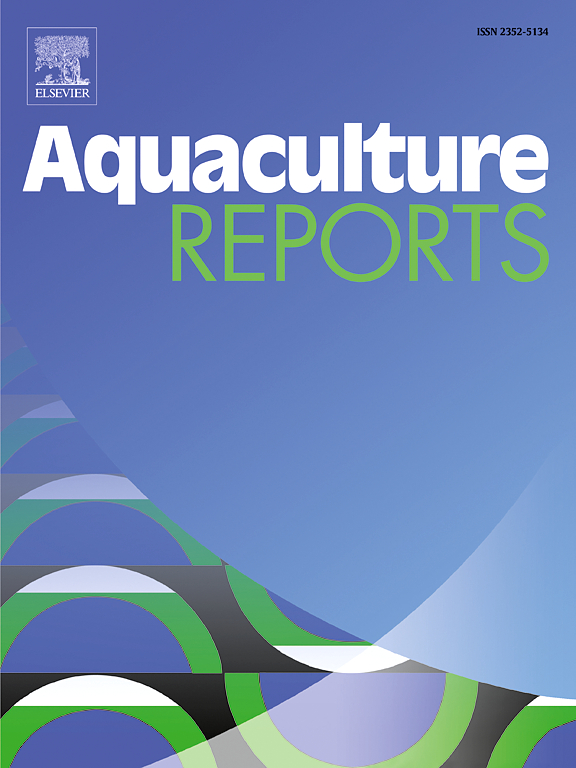Effects of dietary bile acid on the growth performance, intestinal health, blood biochemistry, and antioxidative response of Nile tilapia (Oreochromus niloticus) fed high-fat diets
IF 3.2
2区 农林科学
Q1 FISHERIES
引用次数: 0
Abstract
High-fat (HF) diets are often used in aquaculture as a nonprotein energy source, resulting in lower feed costs and nitrogen emissions. However, high-fat diets have a deleterious influence on aquatic species' metabolic and immunological functioning. Thereby, bile acid (BA) is proposed to relieve the lipid metabolism dysfunction, oxidative stress, and malnutrition caused by HF. In this study, Nile tilapia (4.97 ± 0.34 g) were distributed in six groups in triplicates and stocked in fifteen 100 L plastic tanks. Fish offered six isonitrogenous test diets for 60 days: the control (6 % fat) without BA (LF) and five HF (12 % fat) diets supplemented with BA at 0, 0.05, 0.1, 0.15, and 0.2 g/kg. The results indicated that the HF diet lowered growth, feed efficiency, and survival rates. Furthermore, the fish-fed high-fat diet demonstrated reduced digestive enzyme activity (lipase and amylase), growth hormone (GH), and antioxidative responses (SOD, CAT, and GPx). The intestine of tilapia-fed HF showed also impaired histomorphological features such as reduced villi length and width. However, supplementation of BA in HF diets improved intestinal and villi architecture. The HF diet without BA supplementation revealed massive hepatic steatosis pancreatic vascular congestion and a high necrotic pancreatic cells number. While supplementing BA in HF diets enhanced pancreatic architecture and decreased necrotic hepatocytes. Fish-fed HF diet also showed increased total cholesterol, triglycerides, glucose, ALP, and AST levels as well as the malondialdehyde level (MDA). On the other hand, fish-fed LF and HF/BA diets showed improved growth performance, lipase and amylase, GH, SOD, CAT, and GPx, and intestinal histo-morphology and reduced glucose, leptin, and MDA levels. Dietary BA at 0.15–0.2 g/kg improved the digestion, and antioxidative capacity. In conclusion, dietary BA is required to mitigate the negative impacts of high-fat diets on Nile tilapia growth performance, general health, and antioxidative response.
求助全文
约1分钟内获得全文
求助全文
来源期刊

Aquaculture Reports
Agricultural and Biological Sciences-Animal Science and Zoology
CiteScore
5.90
自引率
8.10%
发文量
469
审稿时长
77 days
期刊介绍:
Aquaculture Reports will publish original research papers and reviews documenting outstanding science with a regional context and focus, answering the need for high quality information on novel species, systems and regions in emerging areas of aquaculture research and development, such as integrated multi-trophic aquaculture, urban aquaculture, ornamental, unfed aquaculture, offshore aquaculture and others. Papers having industry research as priority and encompassing product development research or current industry practice are encouraged.
 求助内容:
求助内容: 应助结果提醒方式:
应助结果提醒方式:


